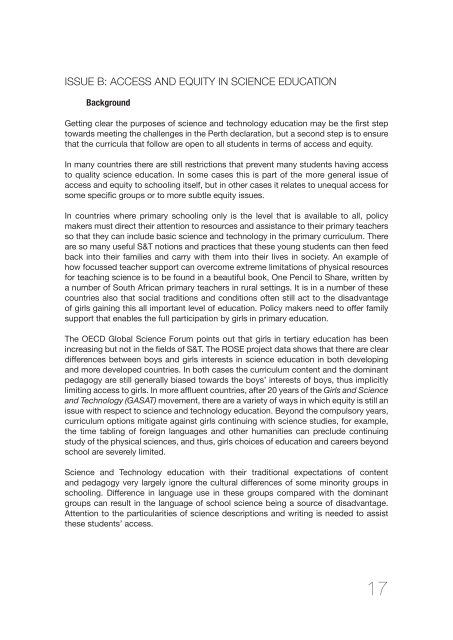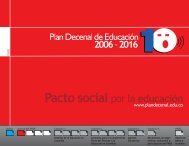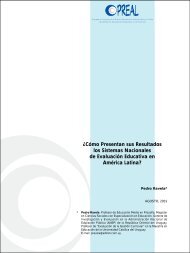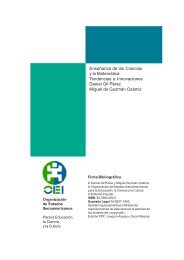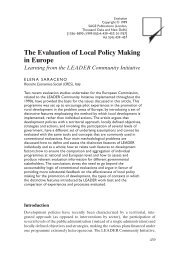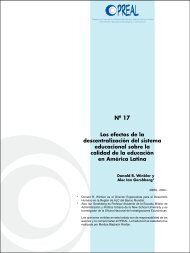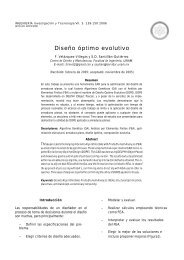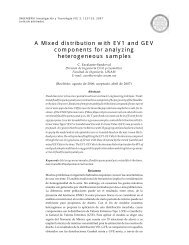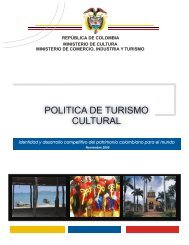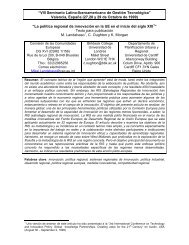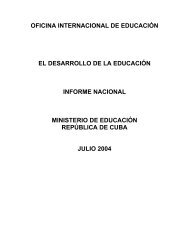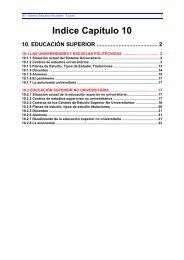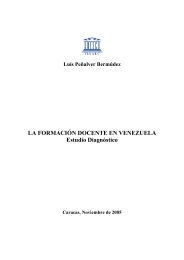Science education policy-making: eleven emerging issues; 2008 - OEI
Science education policy-making: eleven emerging issues; 2008 - OEI
Science education policy-making: eleven emerging issues; 2008 - OEI
Create successful ePaper yourself
Turn your PDF publications into a flip-book with our unique Google optimized e-Paper software.
ISSUE B: ACCESS AND EQUITY IN SCIENCE EDUCATION<br />
Background<br />
Getting clear the purposes of science and technology <strong>education</strong> may be the first step<br />
towards meeting the challenges in the Perth declaration, but a second step is to ensure<br />
that the curricula that follow are open to all students in terms of access and equity.<br />
In many countries there are still restrictions that prevent many students having access<br />
to quality science <strong>education</strong>. In some cases this is part of the more general issue of<br />
access and equity to schooling itself, but in other cases it relates to unequal access for<br />
some specific groups or to more subtle equity <strong>issues</strong>.<br />
In countries where primary schooling only is the level that is available to all, <strong>policy</strong><br />
makers must direct their attention to resources and assistance to their primary teachers<br />
so that they can include basic science and technology in the primary curriculum. There<br />
are so many useful S&T notions and practices that these young students can then feed<br />
back into their families and carry with them into their lives in society. An example of<br />
how focussed teacher support can overcome extreme limitations of physical resources<br />
for teaching science is to be found in a beautiful book, One Pencil to Share, written by<br />
a number of South African primary teachers in rural settings. It is in a number of these<br />
countries also that social traditions and conditions often still act to the disadvantage<br />
of girls gaining this all important level of <strong>education</strong>. Policy makers need to offer family<br />
support that enables the full participation by girls in primary <strong>education</strong>.<br />
The OECD Global <strong>Science</strong> Forum points out that girls in tertiary <strong>education</strong> has been<br />
increasing but not in the fields of S&T. The ROSE project data shows that there are clear<br />
differences between boys and girls interests in science <strong>education</strong> in both developing<br />
and more developed countries. In both cases the curriculum content and the dominant<br />
pedagogy are still generally biased towards the boys’ interests of boys, thus implicitly<br />
limiting access to girls. In more affluent countries, after 20 years of the Girls and <strong>Science</strong><br />
and Technology (GASAT) movement, there are a variety of ways in which equity is still an<br />
issue with respect to science and technology <strong>education</strong>. Beyond the compulsory years,<br />
curriculum options mitigate against girls continuing with science studies, for example,<br />
the time tabling of foreign languages and other humanities can preclude continuing<br />
study of the physical sciences, and thus, girls choices of <strong>education</strong> and careers beyond<br />
school are severely limited.<br />
<strong>Science</strong> and Technology <strong>education</strong> with their traditional expectations of content<br />
and pedagogy very largely ignore the cultural differences of some minority groups in<br />
schooling. Difference in language use in these groups compared with the dominant<br />
groups can result in the language of school science being a source of disadvantage.<br />
Attention to the particularities of science descriptions and writing is needed to assist<br />
these students’ access.<br />
17


